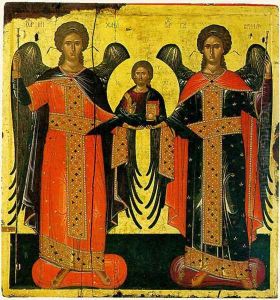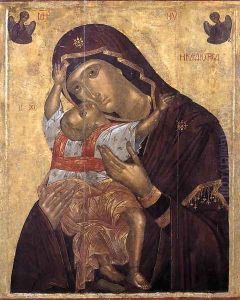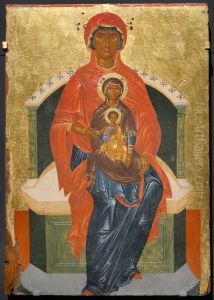Angelos Akotantos Paintings
Angelos Akotantos was a significant figure in the world of Byzantine and post-Byzantine art, known for his contributions to the Cretan School of painting. Although the exact dates of his birth and death are not precisely known, it is generally believed that he was active during the first half of the 15th century, with his artistic activity mainly concentrated between the years 1425 and 1450. Akotantos is often credited as one of the pioneers in the transition from the Byzantine art tradition to the Renaissance influences that started to permeate through Crete, which was then under Venetian rule.
Akotantos's work is characterized by a deep adherence to Byzantine iconographic conventions, yet he also showed signs of incorporating elements that would later become hallmarks of the Cretan School, merging Byzantine spirituality with Western pictorial techniques. He was especially renowned for his icon paintings, which depicted religious figures and scenes with a remarkable clarity, depth, and emotional resonance. His most famous work is the icon of Saint Phanourios, which is considered a masterpiece of Byzantine art, showcasing his skill in creating complex compositions and his ability to convey spiritual intensity.
The artist lived and worked in Heraklion (then known as Candia), Crete's capital, during a period of significant cultural exchange between the Greek East and the Latin West. This cosmopolitan environment influenced his art, making his works pivotal in the study of the cross-cultural interactions of the period. Despite the limited information about his life, Akotantos is recognized as a key figure in setting the foundation for the flourishing of the Cretan School, which would later produce artists like El Greco.
Angelos Akotantos's legacy is preserved in several churches and monasteries across Crete, where his icons still inspire devotion and admiration. His contribution to the development of Greek and Byzantine art is significant, bridging the gap between the medieval Byzantine tradition and the emerging Renaissance style. Through his works, Akotantos not only left a lasting mark on the art history of Crete but also contributed to the broader narrative of European art's evolution during a pivotal historical moment.


